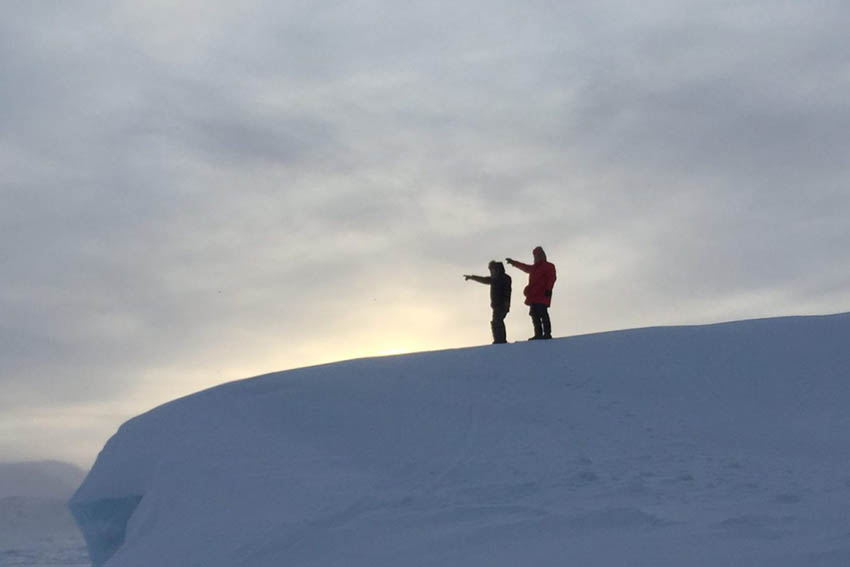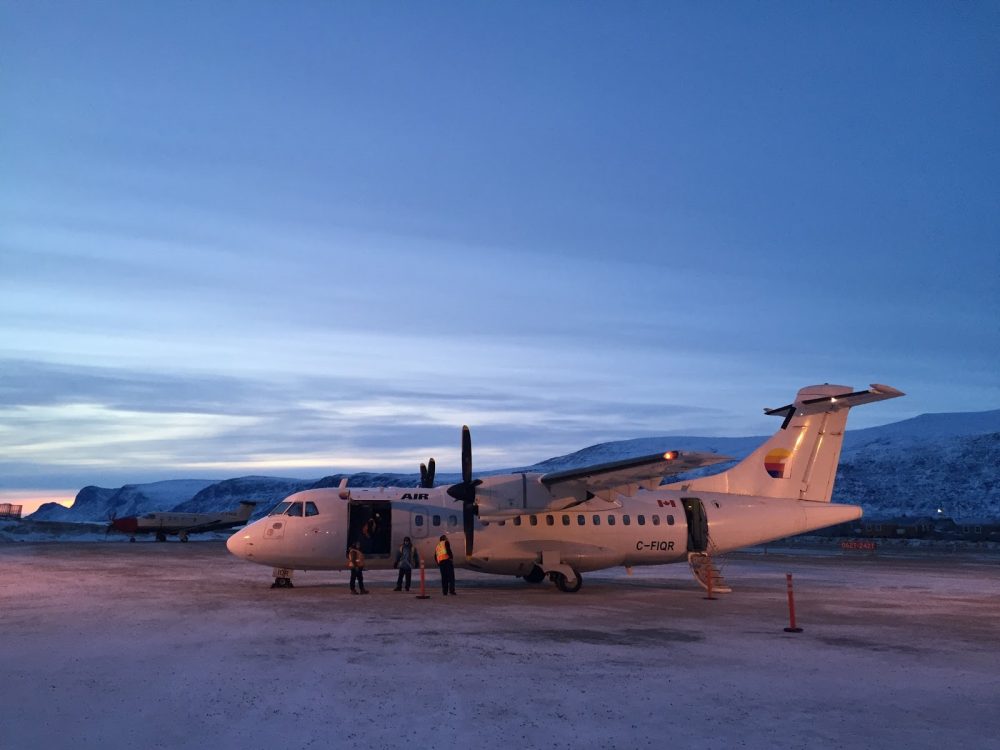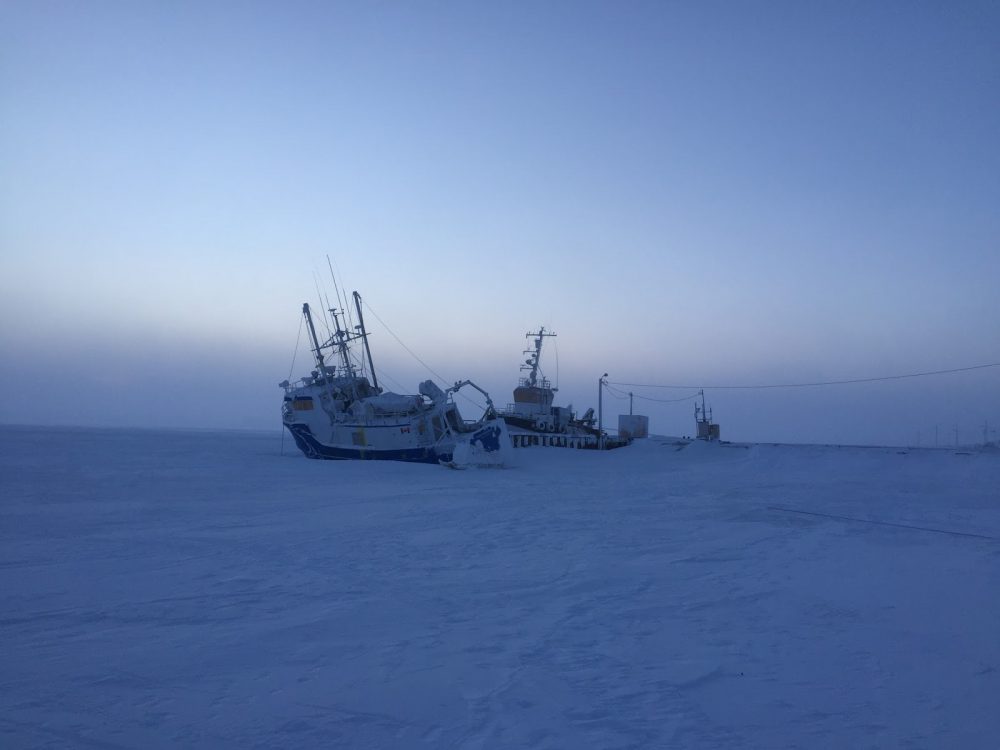Arctic Canada: Qikiqtarjuaq and Yellowknife, a curious winter journey

Table of Contents
Arctic Canada
Arctic Canada may not be on everybody’s winter travel list. However, visiting communities like Qikiqtarjuaq on Baffin Island, or Yellowknife, the relatively metropolitan capital of the Northwest Territories, really does offer an extraordinary glimpse into another world.
A world and a rich culture that has been evolving slowly but surely for millennia in this unusual climate.
In many ways, the Arctic shows best in the winter; at least, when there is some sunshine. Twenty-four hours of darkness can be a downer for visitors, but by mid-February the sun is rising, and the crisp, bright winter days, although short, are quite delightful.
The winter is simply another time of year to the Inuit, it is a time for iglus, ice, dog teams and wider hunting grounds. It is a time for traditional pursuits and discussion, a time for creating the tools that will be required for the short summertime season where their food is accessible from the water.
True, activities are limited, but with a number of communities now starting to develop some community-based tourism products, this will change.
For now, a comprehensive and fulfilling to a northern community should start with an email or phone call to the local EDO (Economic Development Officer), Hamlet Office and the Territorial tourism organisation, Nunavut Tourism.

It should be possible to plan a visit that would include meeting locals who will be most willing to explain elements of their heritage and language, and set up a chance to go out for a day or a half-day trip by dog team of skidoo to explore the local scenery.

Cambridge Bay
I loved the trip; the opportunity to get to Cambridge Bay, a hub community for the hamlets of the Kitikmeot region was a treat. The community of thirteen hundred hardy souls lies on the south coast of Victoria Island, some thirty miles off Canada’s north coast, and acts as a vibrant centre for the economic and political life of the region.
I was there with a colleague to facilitate a workshop in tourism development, and was quite engrossed by some of the ideas that were offered.
One participant, Bobby Klegenberg of Haokak Outfitting was fascinating. An Inuk man with a passion for teaching the youth in the community the traditional ways, offered a fine example. “I teach people to make a traditional spear”, he said, “and then take them fishing; finally, we cook and eat the fish that we catch.”
This is a perfect idea, and a really good example of a short product that would be of great interest to visitors. I asked if he had already done this, and he told us that this was a program that he ran for young offenders.

“So,” I said, “for me to be able to do this, I would have to break a few windows, go to court and be sentenced to spend a morning with you learning about traditional fishing? Couldn’t I just give you $100?”
That tourists’ interests appeared to be aligned with those of the young offender was a fascinating insight for us all. Tourism is all about learning, and so, of course, is the emphasis of a correctional system.
There are many ideas; having dinner with a local family and learning about country food and the language and culture of their people: spending a few hours being introduced to the Inuktitut language and the syllabic writing: taking a walking tour of the community with a local guide who can explain the community’s social structure.
There are many, simple products that can, as a community, be evolved into fascinating insights for visitors.
Yellowknife
The key connecting cities of Yellowknife and Iqaluit are excellent balances to the remote hamlets, and an ideal visit to the north would incorporate a few days in each. The hamlet’s facilities, accommodation and food, are basic but comfortable enough. The major hubs, in contrast, will let tourists visit more comprehensive museums and interpretive displays, and enjoy some creative local meals.
On the Baffin Coast, the community of Qikiqtarjuaq lies at the north end of the Auyuittuq National Park, and this gorgeous community offers visitors the sense of a compact and self-reliant, traditional community and a brand new visitor centre.
Simply flying from Iqaluit is a treat, on a good day, as the aircraft flies low for the thirty-minute hope between Pangnirtung and Qikiqtarjuaq offering a staggering view of this remote and extraordinary park.

Qikiqtarjuaq
There is a strong sense of hosting visitors there, and the community is coming together to create a broadly-based offering of products to engage visitors. The surroundings are quite stunning, the local guides engaging and the sense of adventure and exploration complete.
The bay, that dominates the village, is host to some “captive icebergs”; Qik, as the hamlet is known locally, lies on the Davis Strait, the major iceberg highway that carries the glacial behemoths south to The Atlantic from their calving grounds in Greenland and North Baffin.
From time to time, a glacier becomes caught in the bay, and once in, it cannot escape. For decades, as they slowly melt, the bergs form an integral part of the landscape, and in the winter offer visitors a fantastic opportunity to head out by sled and clamber over these iconic arctic giants.


To explore and learn; the two major components in my kind of tourism are both here. As tourism develops, and it will be a slow and deliberate process, travellers who venture north can be sure of a warm and fascinating welcome to this Baffin outpost.
I usually head south at this time of year, but the past couple of weeks in the High Arctic have been among the most fascinating I have ever been fortunate to experience, and I can’t wait to return to the small communities in the coldest part of the world.
And yes, in the winter!


